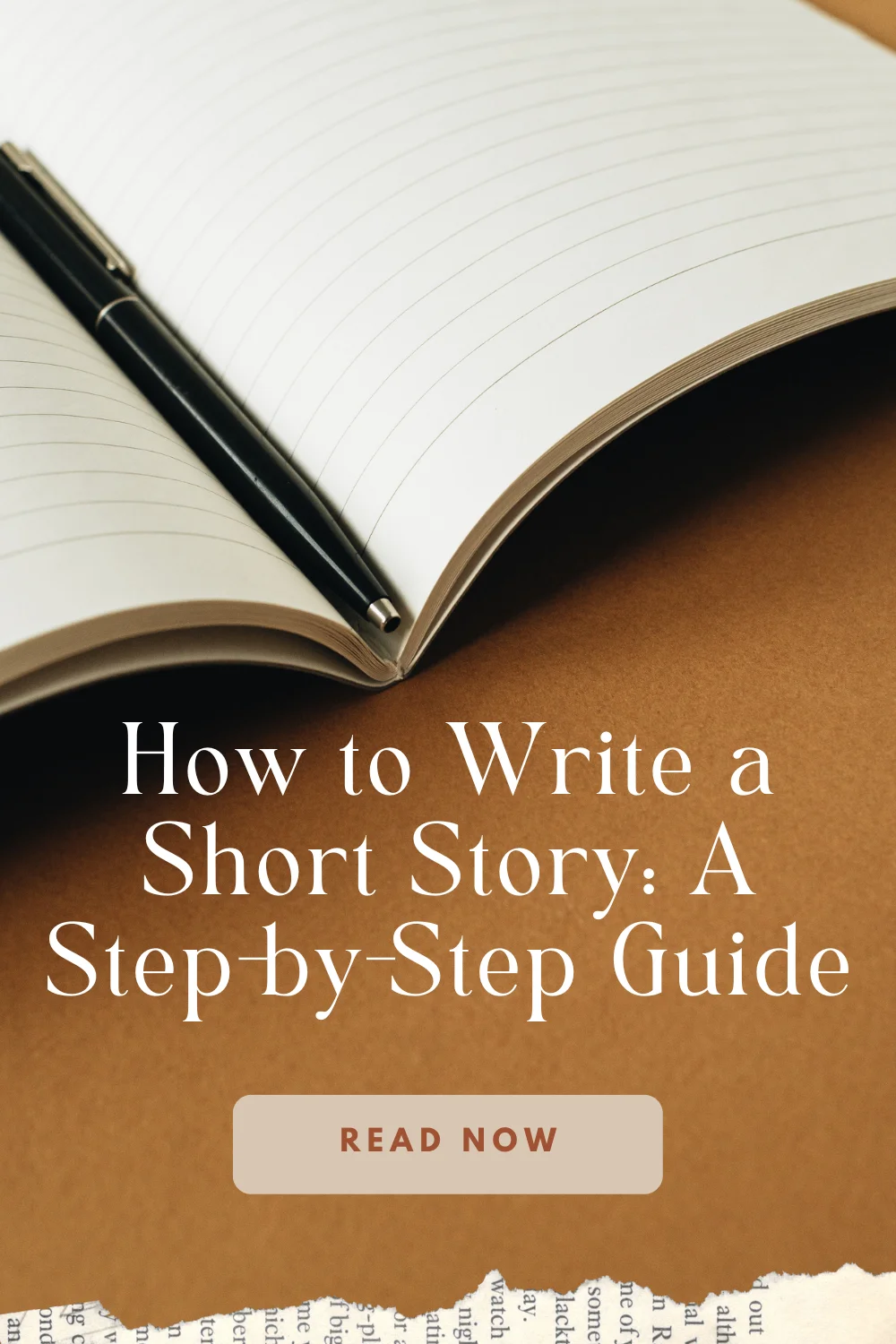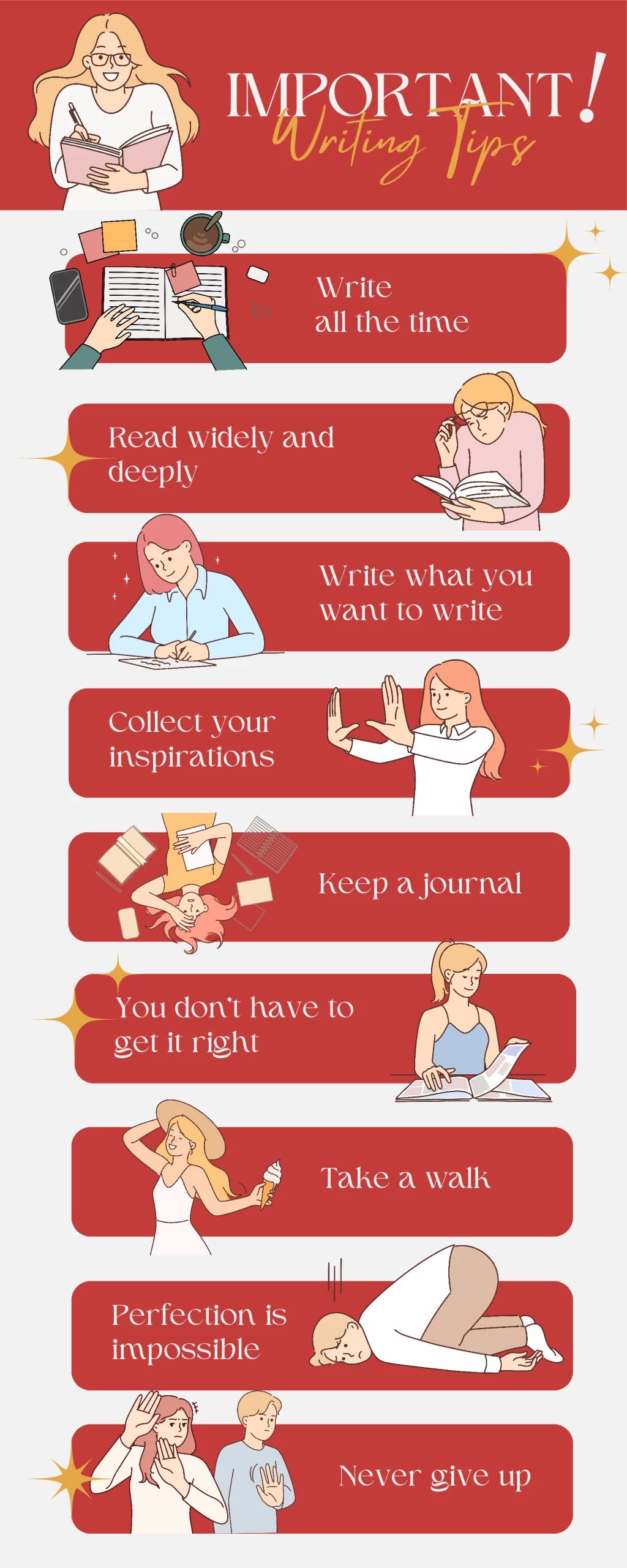Are you an aspiring writer eager to craft that keep readers on the edge of their seats? Short stories are a beautiful art form that allows you to convey powerful narratives in a concise and captivating manner. This step-by-step guide is your key to unlocking the world of short story writing. From understanding the essence of a short story to honing your writing skills, we’ll take you through every step of the process.
This post contains affiliate links. Please read our disclosure.

“The scariest moment is always just before you start.” – Stephen King
In terms of writing a short story, best-selling suspense master Stephen King said it best on beginning is the hardest part. Once you start, the process becomes easier.
Whenever you find yourself stuck, remember that the key to eliminating creative blocks often lies in simple actions. First, set a consistent writing schedule; habit can be a powerful antidote to inertia. Next, read widely and expose yourself to various genres and styles to ignite fresh inspiration. Don’t be afraid to take breaks, allowing your mind to rejuvenate. Engaging in writing prompts and exercises can also stimulate creativity and help you bypass mental roadblocks. Lastly, remember that revisions are a natural part of the writing process, so don’t fret over initial imperfections. Stay patient and persistent, and your creativity will flow more freely, ultimately aiding you in crafting your short story.
If you ever feel stuck or uninspired, don’t miss these practical ways to overcome writer’s block that have helped countless writers regain momentum.
About Me
Allow me to introduce myself: I’ve been passionate about writing since my junior high school days. Over the years, I’ve published dozens of stories in various magazines and anthologies. Writing is not just a creative outlet for me; it’s a lifelong journey of honing my craft. While my primary professional focus revolves around business marketing and strategy, I also find immense joy in exploring the world of fiction. With time, I’ve been able to merge my expertise in business with my love for storytelling. Now, I’m thrilled to share some beginner-friendly insights to help you embark on your creative writing journey.
As a writer, I’ve personally benefited from Zoetrope.com, where I’ve been a member for 16+ years.

With my dedication to the site, I’ve earned the distinction of being a top 10% reviewer:
It’s not just about receiving feedback; by actively critiquing other writers’ work, I’ve honed my skills and evolved into a better writer myself. Zoetrope.com has not only provided me with a supportive community but also allowed me to contribute and learn from my fellow writers, a testament to its effectiveness as a platform for writers looking to improve their short story writing skills.
Now let’s learn how to write a short story step by step:
1. Generate Ideas
Generating ideas is the foundational step in crafting a compelling short story. Start by brainstorming a range of creative concepts. Explore themes that resonate with you and consider the emotions or messages you want to convey through your story. Dive into the world of characters, their experiences, and the settings they inhabit. By giving yourself the freedom to explore various ideas, you’ll find the one that resonates the most and forms the core of your narrative.
2. Develop Characters
Character development is essential for a captivating short story. Create characters that feel real, with their own distinct personalities, motivations, and backgrounds. The more you know about your characters, the better you can make them come to life on the page. Delve into their past experiences, hopes, and fears. Understanding your characters on a deep level allows you to write them authentically and ensures that readers can connect with them.
3. Select Setting
Choosing the right setting can significantly impact your short story. Pick a vivid and relevant backdrop that complements your narrative. The setting can influence the mood and atmosphere. It an integral part of your storytelling, so make sure your setting adds depth and meaning to your story.
4. Outline the Plot

Outlining the plot is like creating a roadmap for your story. Craft a plot outline that encompasses the key events and narrative structure. Begin with a compelling hook to grab your readers’ attention, then introduce conflicts or challenges that drive the plot forward. Build tension and suspense as you head toward the climax, and offer a satisfying resolution that ties up loose ends.
5. Introduce Conflict

Every engaging story hinges on conflict. Develop a central problem or challenge that your characters must face and resolve. The conflict serves as the driving force behind your plot, keeping readers engaged and eager to see how it unfolds. It can be a personal struggle, an external threat, or a moral dilemma, but it should be meaningful and relatable to your readers.
6. Craft Dialogue
Dialogue is a powerful tool for character development and plot advancement. Craft realistic and meaningful conversations that reveal character traits and motivations. Use dialogue to drive the narrative, convey emotions, and maintain reader engagement. Well-written dialogue not only brings your characters to life but also adds depth and authenticity to your story.
7. Show, Don’t Tell

“Show, don’t tell” is a fundamental principle of effective storytelling. Use descriptive language to paint vivid images in your readers’ minds, allowing them to experience the story as if they were there. Instead of stating facts, show the reader what’s happening through actions, sensations, and emotions. This technique creates a more immersive and engaging reading experience.
8. Edit and Revise

After completing your first draft, take the time to edit and revise your story. This step is crucial for polishing your work. Check for grammar and spelling errors, refine the pacing, and ensure that the story flows smoothly. Revising allows you to fine-tune your narrative, making it more cohesive and engaging for your readers.
9. Seek Feedback

Sharing your story with others can provide valuable insights and perspectives. Seek feedback from fellow writers or trusted readers. Constructive criticism can help you identify areas for improvement and enhance your storytelling skills. Embrace feedback as an opportunity to grow and refine your work.
10. Choose a Title

Selecting an appropriate title is essential for your short story. Your title should be compelling, relevant, and capture the essence of your narrative in just a few words. It’s the first impression your readers will have, so make it memorable and thought-provoking.
11. Final Proofread

Before publishing or sharing your story, conduct a final proofread. Ensure that your work is free from grammar and spelling errors. Double-check your punctuation and formatting. A thorough proofreading is the last step in preparing your story for publication.
12. Publish or Share

Decide where and how you want to share your story. You may choose to publish it online, submit it to magazines or anthologies, or simply share it with friends and family. Your decision will depend on your goals as a writer and the audience you want to reach. Make sure to select the platform or medium that aligns with your objectives.
13. Promote Your Work
Promoting your story is crucial for reaching a wider audience. If you’re sharing your story online, leverage social media, writing communities, and personal networks to promote your work. Engage with your readers, respond to comments, and use platforms like blogs or personal websites to share more about your writing journey. Promoting your work not only helps you connect with readers but also builds your presence as a writer.

If you’re serious about developing your writing craft but sometimes find the words just won’t come, don’t worry—you’re not alone. Be sure to check out these proven techniques to overcome writer’s block and keep your creativity flowing strong.